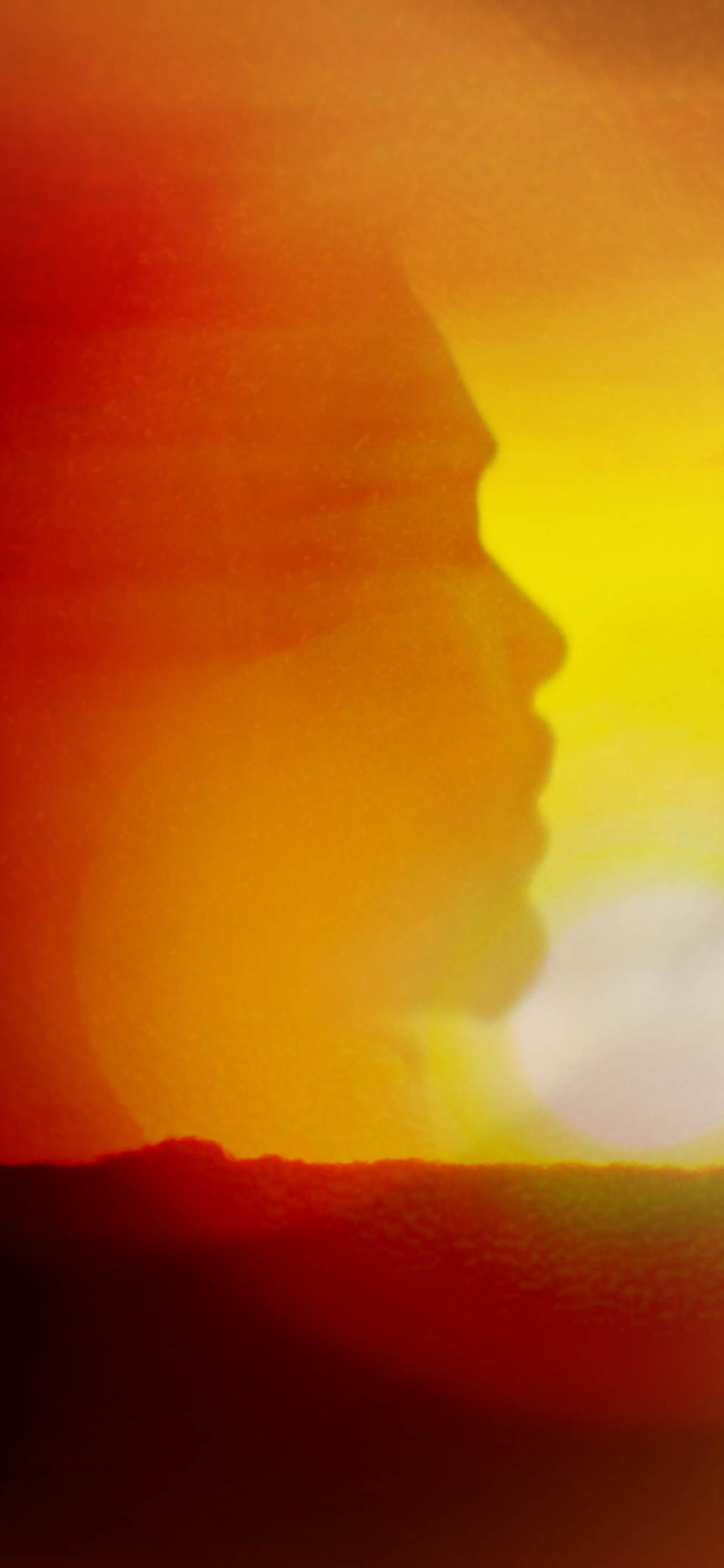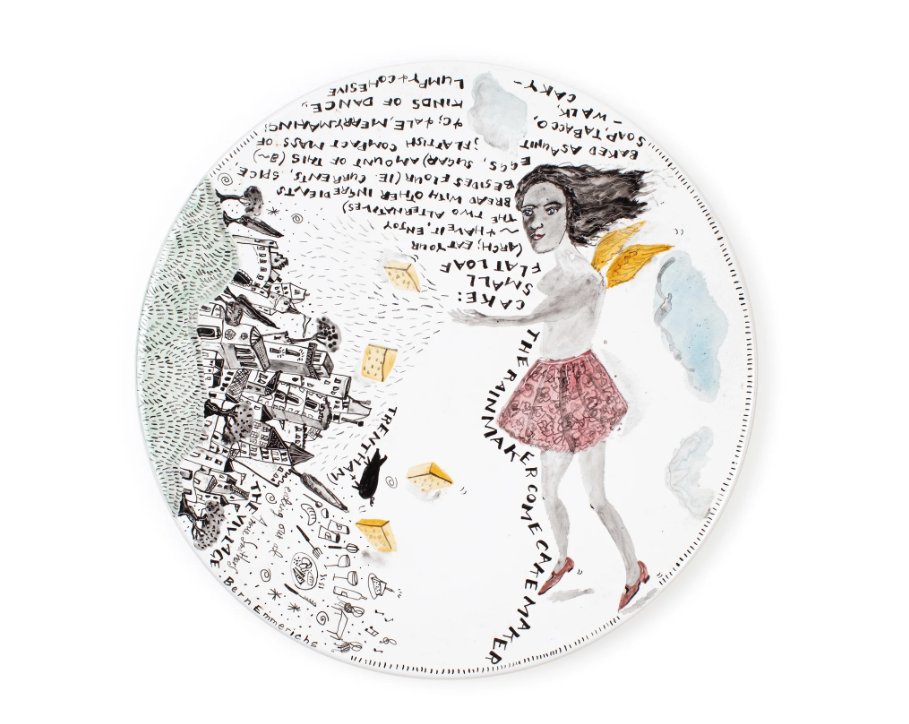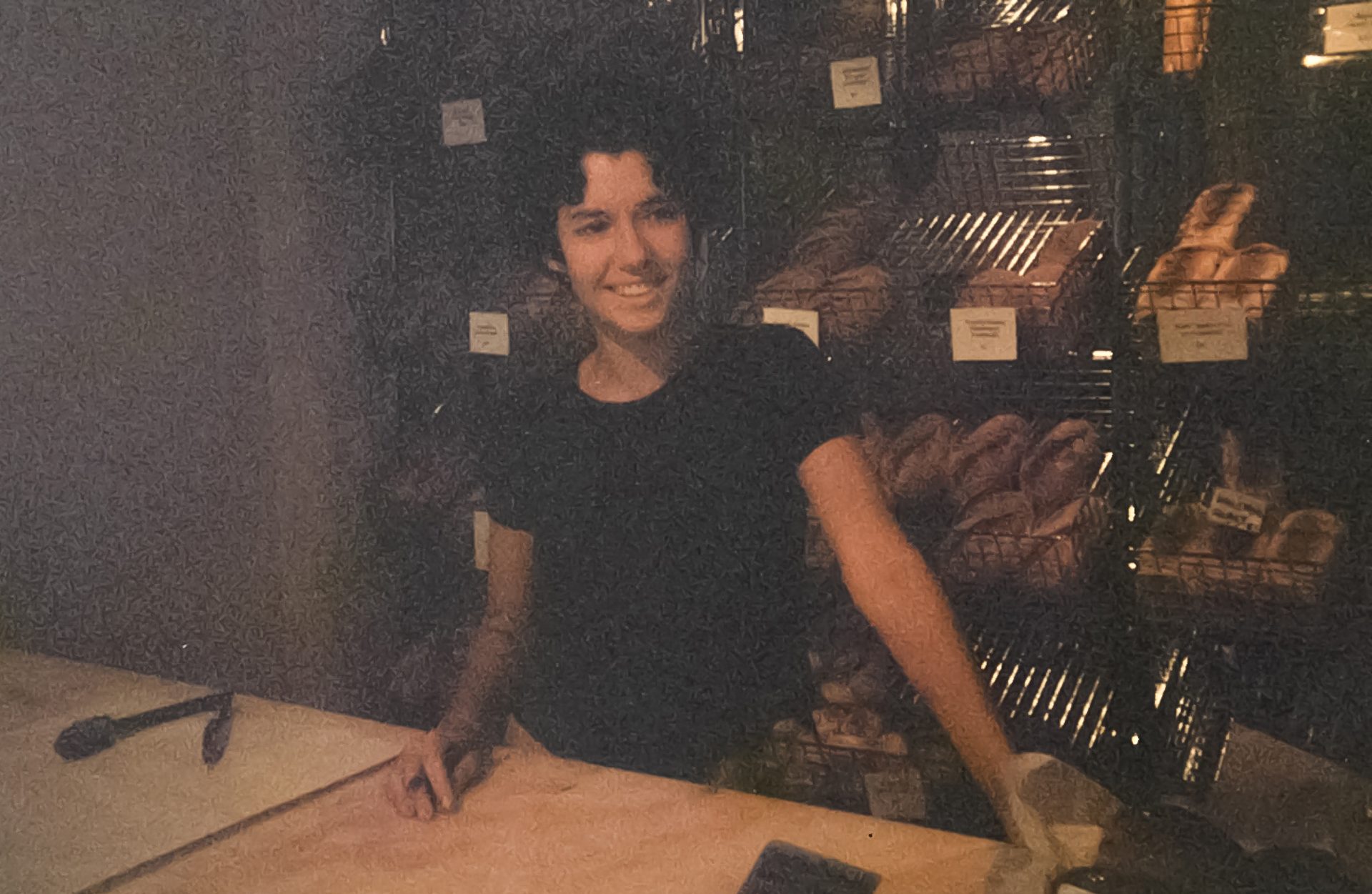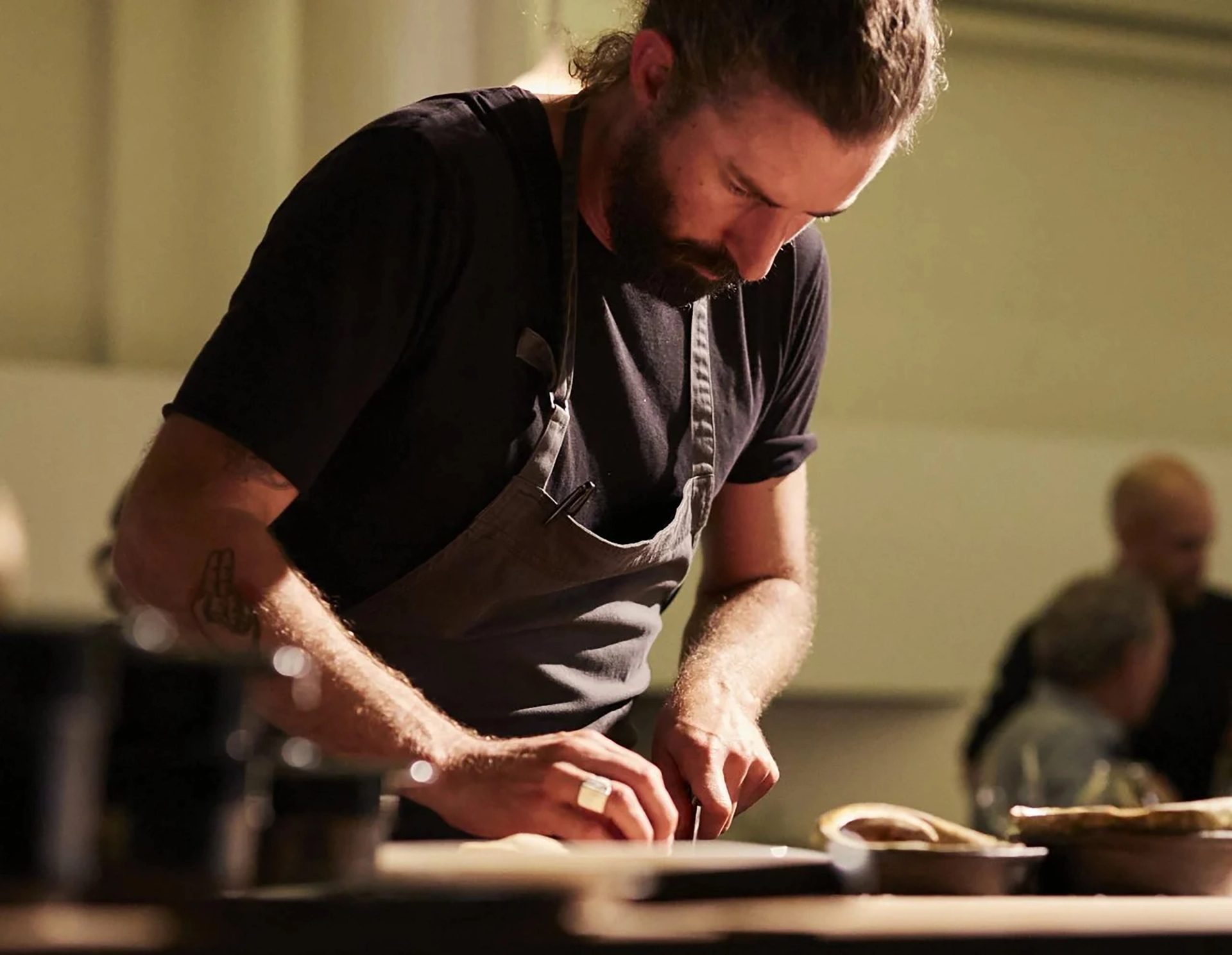The Roving Chef

Australian Culinary Archive
Established by Powerhouse in 2020, the Australian Culinary Archive is a living, evolving repository of our food industry: the chefs and cooks, food producers and vendors, writers and photographers, critics and diners whose hunger for innovation has coalesced over the decades into a vital sphere of cultural production. It is a storehouse for oral histories, written records, photographic documentation and unique artefacts that attest to the passion and distinction that typify this vast sector.
Led by Julie Gibbs, who has published a long list of Australian cookbooks in a 35-year career, the Australian Culinary Archive oral history archive brings together voices from across the food industry — from renowned professional chefs to community and household cooks as well as those that support and celebrate them.
About
David Moyle grew up in Port Fairy in south-western Victoria. He was an apprentice at Bill Marchetti's famous restaurant The Latin in Melbourne and then became well known for his distinctive, spare, elemental cooking when he headed up award-winning Franklin in Hobart. David now works as a travelling chef and food consultant, igniting pop ups and festivals. He is the owner of the Salty Mangrove in New Brighton, NSW and a food editor for The Saturday Paper.
Julie Gibbs is the curatorial adviser to the Australian Culinary Archive, a major initiative of Powerhouse Museum, collecting and preserving the stories and archives of Australia's leading chefs and producers. In her extensive career in book publishing Julie has given voice to and published works by our chefs, cooks and food writers.
The Roving Chef
In this interview for the Australian Culinary Archive chef David Moyle describes the deceptive simplicity that drives his cooking, and shows that deep thinking is required to create food that is excellent and appears simple.
Julie Gibbs David, where did you grow up?
David Moyle I spent the earlier part of my life in south-western Victoria, in Port Fairy, a tourist town with its industry strongly based on fisheries. Mum’s an artist and florist. My father’s a teacher.
JG How or why did you become a chef?
DM The joke’s always been… out of necessity, being one of five and both parents were working, cooking for myself because I cared about the result. I wanted to get the hell out of the small country town, which I think is a pretty regular desire for a 17-year-old boy. My brother in-law at the time was the sous-chef at Bill Marchetti’s restaurant in Melbourne. I did a week’s trial and went into an apprenticeship from there. Bill did the classic Michel Roux thing of asking you to cook an egg. And I still cook eggs this way, just a triangle fold in just melted butter to try to keep the yolk runny.
JG Was there any other career you might’ve pursued?
DM I was looking into industrial design and architecture, which is an area I’m still interested in. But it all looked so structured, and I don’t think that way. So I went down the path of cooking.
JG And has that been the best choice you could have made?
DM Yes and no. It’s funny, I oscillate. I’m going to cook dinner for a bunch of friends tonight. I cannot think of many things I prefer to do. The reality is the love tends to get squeezed out by repetition. I fall out of love and in love and it’s a constant in my life, has been for 30 years. But one thing pulls you back in, the desire and love and extraordinary depth of friends, the camaraderie. And exposure to extraordinary travels and people.
JG You mentioned Bill Marchetti. Who’ve been the key influential mentors in your career?
DM It’s amazing what you draw out of your mentors. There’s many textbooks, many techniques, and things you can glean from just watching. Andrew McConnell was one of my principal mentors – his unwavering passion for the product, the end result, but as well how he engages people.
JG If I think of your food that I’ve enjoyed over the years, it has a spareness to it.
DM It’s the Miles Davis approach of choosing not to play notes, leaving things out. I give great thought and consideration to always try to do less, which sounds ridiculous, but I love that spareness. You still have to be generous and nourish. I just think the best way to show the beauty of something is to leave it as clean as possible. There’s a Ronnie Di Stasio quote that a great meal can be distilled down to pretty much rice, lemon and olive oil. Obviously, salt is there, too.
JG I think of you serving a fish with a head on.
DM Yeah. I get a lot of grief. I just did a recipe in The Saturday Paper for beef heart in the same style of the liver with onions I cooked back at Marchetti’s Latin. And I’ve never had such negative feedback about serving one muscle of an animal and not the other. It’s astonishing. In the Franklin kitchen [in Hobart] I used to cook pigeons whole. And the point was my grower loved these birds so much and adhered to the European method of tucking the feet into the cavity and leaving the head to show that the bird’s been dispatched in a careful, considered way. I’d carved the pigeon on a big chopping block that was in the middle of the kitchen. You couldn’t help but see it. I’m not saying what I’m doing is right, but just that subtle notion of being challenged a little bit over what you eat – it’s not just a source of fuel that you just chuck in your body.
JG You use fire a lot, don’t you?
DM Same thing, I guess, the elements. I’ve always been fairly heavily involved in the arts and did a dinner which was celebrating a piece that was commissioned for Richard Tognetti on Bruny Island. All I took was a knife. We shot wallaby, we got abalone and native oysters. I didn’t bring salt, so was brining the wallaby in the ocean and cooking things in seawater. It was all very spare, using different types of saps, really interesting resins and things to experiment with chasing flavour. And the thing with fire is, especially with protein, with smoke, the benefits that come from it, you can’t replicate in anything else. I cook by feel. You can’t write a recipe for a grilled steak. Over fire there’s so many elements at play there.
JG What do you consider to be your signature dish?
DM The most definitive restaurant for me was probably Franklin. And the most loved and obvious dish was whole abalone wrapped in bull kelp and braised in sake in the wood-fired oven, cooked low and slow in this slightly dry but smoky environment. It would then get carved to order and placed back in the shell with a sauce of the liver of the abalone and black pepper. I would serve it with a local buckwheat broth.
JG You write regularly for The Saturday Paper. What do you enjoy about that?
DM That’s actually probably been the best thing for my creative output. I very much try to do recipes that are descriptors of where I am at the time. In Finland, there were blueberries everywhere and that’s where I drew a lot of inspiration. Or it could be sea urchin. It’s more about, okay here’s the ingredients that I have in front of me, how’s the best way for me to deal with this.
JG So, when you go out rogue cooking, if you could take five ingredients, what would they be?
DM White onion, because you can have it raw as well as cook it. A good vinegar, not too complex. A lot of friends that are winemakers have vinegars that I’ll access. The difference is unbelievable, as opposed to a dead vinegar that’s been sitting in a pantry. Good olive oil and fish sauce. And complex dried chilli like a poblano, a kind of ancho chilli; the ones that are smoky, bring complex flavours.
JG What’s on the menu for those friends tonight?
DM Mediterranean cuisine has really got me again. Broad beans, kohlrabi. Funnily enough, a white onion. Same old dog, same old tricks. And beautiful bigeye tuna from Mooloolaba, grilled very simply, with salad, and a little bit of fresh oregano out of the garden.
JG What will you drink?
DM It’s a blend from a producer out of the Loire, his name’s François Dhumes. Triplettes – pretty funky, that wine. And a Greek wine, a white varietal, Tetramythos Roditis Nature. I’m a proponent of the natural wine scene. I still love faulty wines. I can’t stand mousiness. If it’s too high in volatile acid, it’s disgusting. But if there’s a bit of funk in there, I’m all about it, as long as it’s in balance, being about finding excellence not by finding fault but celebrating the expression.
JG Are they getting any dessert?
DM No, I am the worst. I just can’t love desserts. Every restaurant I’ve done, I’ve only ever had two desserts maximum.
JG What about cheese?
DM Cheese, absolutely. That’s a conversation continuance. I find dessert just stops everything.
JG If you included a couple of cheeses, what would they be?
DM Holy Goat all day. The Luna is exceptional. And a really excellent Comté that I’ve been getting from Bottle & Hoop, in Brunswick Heads.
JG If I had to make a heading for this interview, I would call you the roving chef.
DM Yeah, that’s about right. Although look out, I think I might be settling down. I’ve bought a lease on a cafe in New Brighton [in northern New South Wales] on a river overlooking mangroves. It’s very, very humble, a quaint little seaside village cafe – seven days, coffee and cake and lunches. Really pared back to grilled fish and cooking a whole crab. It’s just like life idealism right there. I don’t want a restaurant where somebody comes in and picks up the plate and looks where it’s made. Just come as you are and do as you please. But by the same token, I’m going to have some kick-arse stuff in there but in a really understated way.
This interview was first published by The Saturday Paper.
More
Powerhouse Food
Powerhouse Food examines food within the context of history and how its connectedness draws together land, creatures, people, roads, factories, markets and waterways, sustaining us and holding our futures.





















